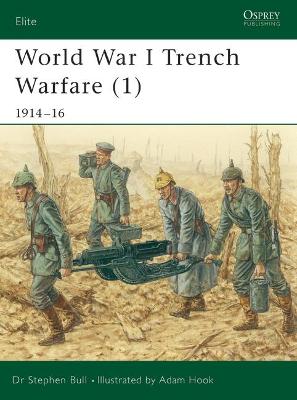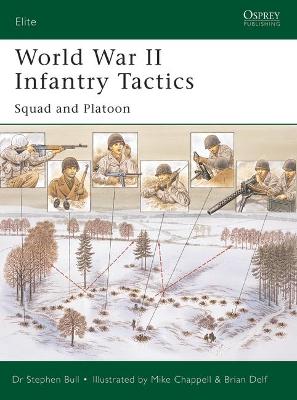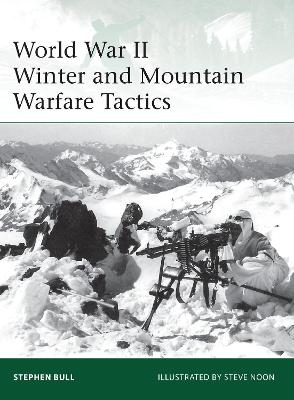Elite
5 primary works • 6 total works
Book 78
The years from 1914 to 1918 saw a whole series of complex and very rapid changes in infantry tactics, which fundamentally altered the way wars had been fought for 150 years. This two-part study describes and illustrates the development of infantry equipment and weapons; of support weapons; of field fortifications; and, most importantly, exactly how these items and techniques were all employed in attack and defence. The texts are illustrated with contemporary photos and diagrams, and with new colour plates combining details of uniforms, equipment and weapons with 'bird's-eye views' explaining their use in battle. In short, they offer a detailed but accessible tactical guidebook on 'how to fight a trench war'.
Book 105
Despite all technological advances, final mastery of any battlefield depends upon the tight-knit group of footsoldiers trained to manoeuvre, shoot and dig in. This first of a two-part study examines the methods by which the Western infantry of World War II - the German, British and US armies - actually brought their firepower to bear. Drawing upon period training manuals for the evolving theory, and on personal memoirs for the individual practice, this first book covers the organization and tactics of the squad of ten or a dozen men, and the platoon of three or four squads. The text is illustrated with contemporary photographs and diagrams, and with colour plates bringing to life the movement of soldiers on the battlefield.
Book 122
Drawing on contemporary training documents and veterans' descriptions, this book examines the specific tactics used by the men who inspired 'Band of Brothers' and 'Saving Private Ryan'. The tactics used by US, British and German troops are compared and discussed, and the evolution of new weapons and tactics in response to changing fighting conditions in Europe is traced. This volume covers the typical operations of an infantry battalion, and examines how they used support weapons such as medium MGs, mortars and anti-tank weapons. Infantry co-operation with artillery and tank battalions is also covered, in this second of two books focusing on World War 2 infantry tactics.
Book 151
Suffocating heat, tropical rain and hostile jungle terrain were but a few of the treacherous obstacles that confronted the Allies when they fought against the Imperial Japanese Army in the Southeast Asian rainforest. Aided by the knowledge of the terrain, the Japanese were consistently successful in their advances during the winter of 1941-42. However, once the Allies realised that unconventional means and specific jungle skills would be needed in order to survive and win, they developed effective units able to fight the Japanese in this hostile environment. Providing an expert analysis of tactical warfare, this book explains the early successes of the Japanese and highlights how the Allies overcame many physical and psychological impairments, to master the art of jungle warfare and finally conquer the strange and claustrophobic jungle environment.
Book 168
In a continuation of the tactics mini-series, this book analyzes the physical tactics of the close-quarter fighting that took place in ruined cities during World War II. Street-to-street fighting in cities was not a new development, but the bombed-out shells of cities and advances in weaponry meant that World War II took such strategies to a new level of savagery and violence. Packed with eye-witness accounts, tutorials from original training manuals, maps, and full-colour artwork, this is an eye-opening insight into the tactics and experiences of infantry fighting their way through ruined cities in the face of heavy casualty rates and vicious resistance.
The twentieth century saw an unprecedented emphasis on fighting in all terrains, seasons and weather conditions. Such conditions made even basic survival difficult as subzero temperatures caused weapons to jam, engines to seize up and soldiers to suffer frostbite, snow blindness and hypothermia. The conditions often favoured small groups of mobile, lightly armed soldiers, rather than the armoured forces or air power that dominated other combat environments. Some European armies developed small numbers of specialist alpine troops before and during World War I, but these proved to be insufficient as nearly all the major combatants of World War II found themselves fighting for extended periods in extremely hostile cold-weather and/or alpine environments. Drawing upon manuals, memoirs and unit histories and illustrated with period tactical diagrams and specially commissioned full-colour artwork, this study sheds new light on the winter-warfare tactics and techniques of the US, British, German, Soviet and Finnish armies of World War II.





